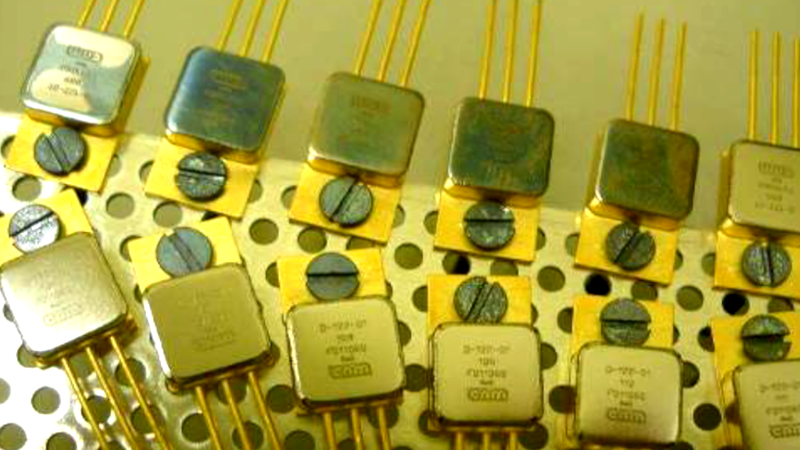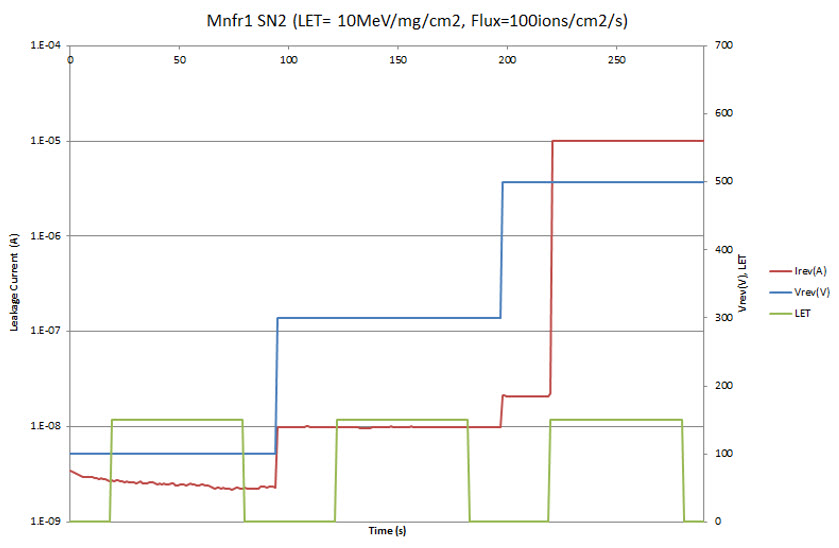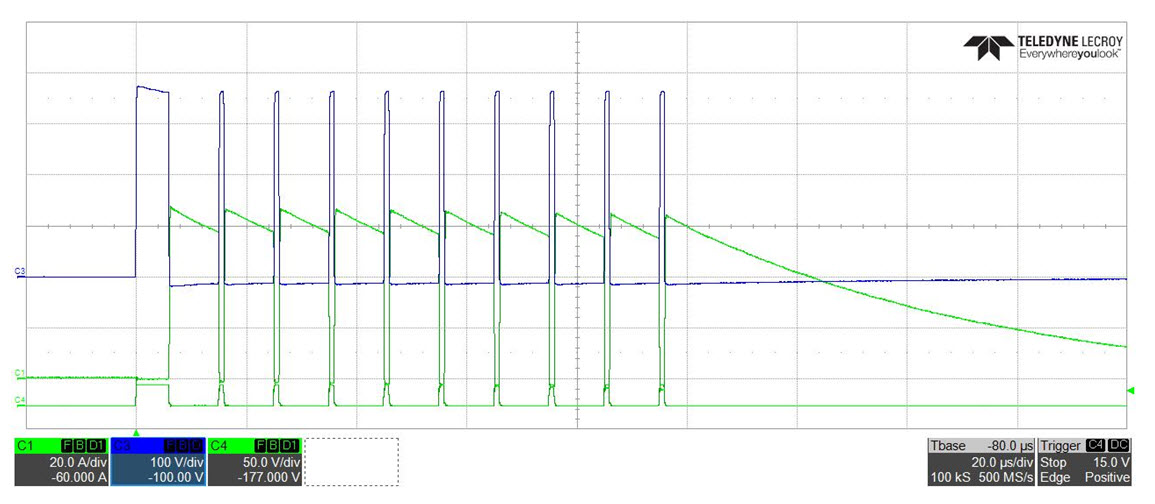Even if there are known weaknesses of SiC Schottky diodes while being biased at high voltage in dense ions environments, they can still be the best option for certain very demanding operational conditions. The compatibility of these devices is analysed in this technical note.
Degradation appears above a specific threshold voltage (Vdeg, typically a bit higher than 300V) inducing permanent damage and loss of the diode blocking capability. Increase rate of the diodes reverse current depends on LET of the ion beam, and electrical bias and no degradation is observing when no radiation is striking the device (fig. 1).


Figure 1: Reverse current increase with time under constant heavy ions flux only above Vdeg.
SiC Testing Capabilities
This effect has also been reproduced by AlTER at slightly higher voltages in SiC PiN diodes developed for testing purposes. This other type of diode is a key element present in the vertical power MOSFETs and can be the weak point of these power devices when used under heavy ions radiation. This sensitivity has limited the usage of SiC devices to only using high derating values.
However, additional tests performed on already degraded Schottky diodes demonstrated good stability after radiation tests, meaning that if an increase of the reverse current up to a certain value is acceptable for the application, the devices are safe to use. This allows for performing radiation validation SiC testing and guaranteeing their good performance in applications for voltages even higher than the Vdeg.
Low Trr values of these devices (even below 10ns for ATN-CNM-300D2) make them an ideal choice for switching applications. As seen in Fig.1, degradation is caused by ions striking when the voltage is above the threshold value. This implies that any ions striking when the diode is forward biased or even reverse-biased below Vdeg do not increase the reverse current. If the final application of the device is switching, blocking time shall be evaluated, and if it is low enough, the devices can be tested in a customized radiation SiC testing campaign. Fig.2 shows the bias profile of an ATN-CNM-300D2 diode in its usage for JUICE mission where the device is sensitive only 0.5% of the time.

Figure 2: Bias profile during the test. 60A forward current peaks alternating with 360V reverse voltage periods.
Juan Moreno Echarri
Juan Moreno has a bachelor’s degree in physics and since 2010 has worked in the Optoelectronics and Innovation department of ALTER. In charge of the BepiColombo/SolO SiC blocking diodes as a test engineer for years. Currently responsible for radiation tolerance improving SiC modules and SiC plastic modules testing. Nowadays, he is the technical contact point for the SiC diodes development in ALTER.
